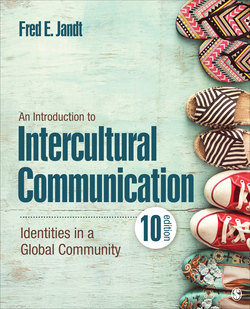Читать книгу An Introduction to Intercultural Communication - Fred E. Jandt - Страница 104
На сайте Литреса книга снята с продажи.
Learning Objectives
ОглавлениеAfter studying this chapter, you will be able to:
Explain the relationship between culture and sensation
Give examples of culture’s effect on each step of the perception process
Explain how communication differs in high-context and low-context cultures
Explain the concept of face and its importance in intercultural communication
Explain how high and low context helps explain communication challenges between China and the United States
Identify the communication barriers between China and the United States over issues of territorial sovereignty, human rights, and free speech
In Chapter 1, you read that the term context refers to the environment in which communication takes place that helps define the communication. In cognitive psychology and marketing, the term Context effect is used to describe the influence environmental factors, such as surrounding objects and events, have on the perception of a stimulus. For example, as shown in Figure 3.1, the moon appears to be much larger and closer when it is observed just above the horizon than when it is at its zenith overhead. The different contexts (terrain and horizon sky or zenith sky) induce different perceptions. In this chapter, you’ll read how context affects each step of the perception process.
Figure 3.1 Context Effect Illusion
Note: The moon on the right has been made smaller to simulate the illusion.
Edward T. Hall, credited with founding the scholarly field of intercultural communication, introduced the concept of high and low context. Hall used these terms to describe how important context is in communication. In this chapter, you’ll compare communication in high- and low-context cultures.
On the international stage, today’s relationship between China and the United States is critical. As China is considered a high-context culture and the United States is considered a low-context culture, you’ll read how this has contributed to misunderstandings between the two countries over many issues, including territorial sovereignty and human rights.
